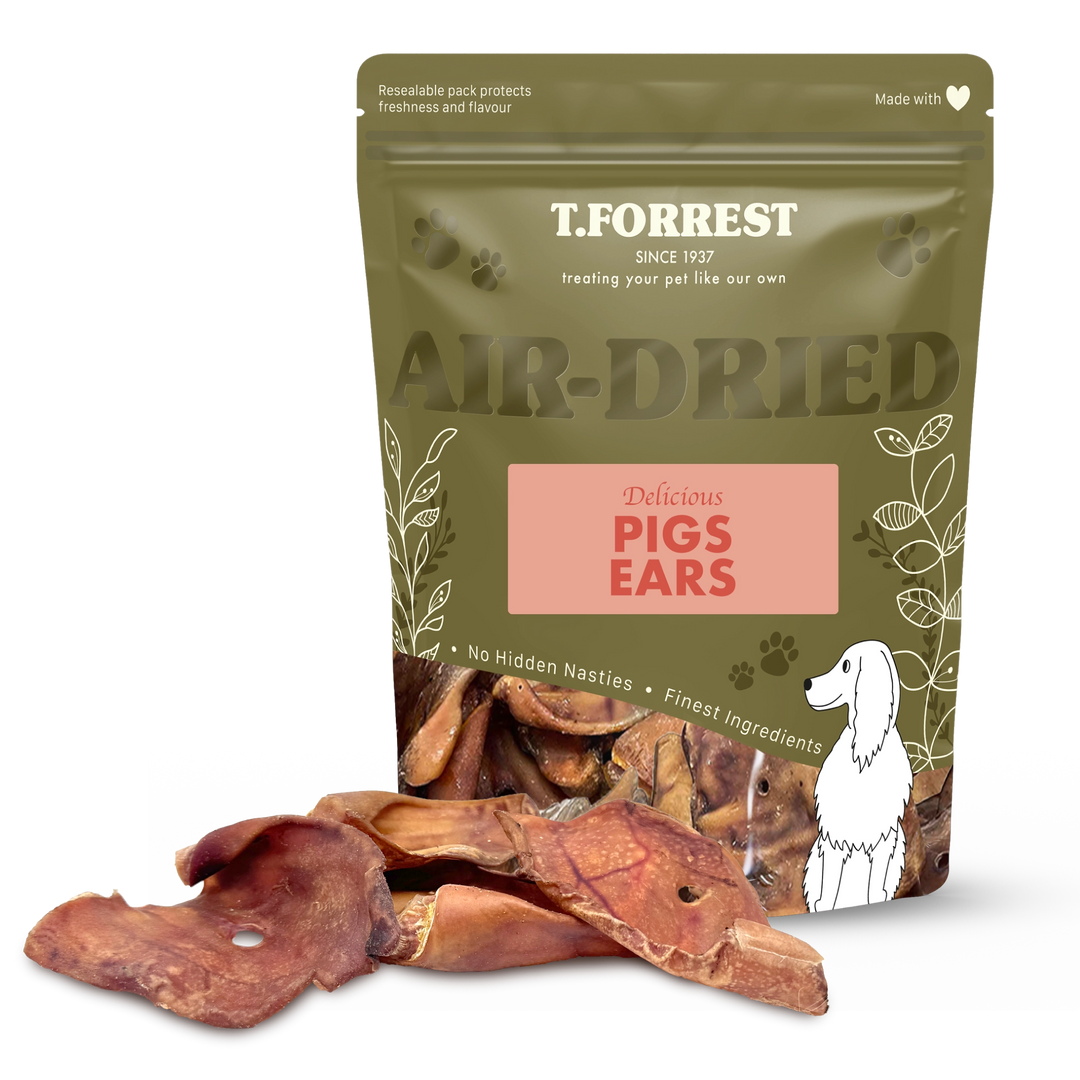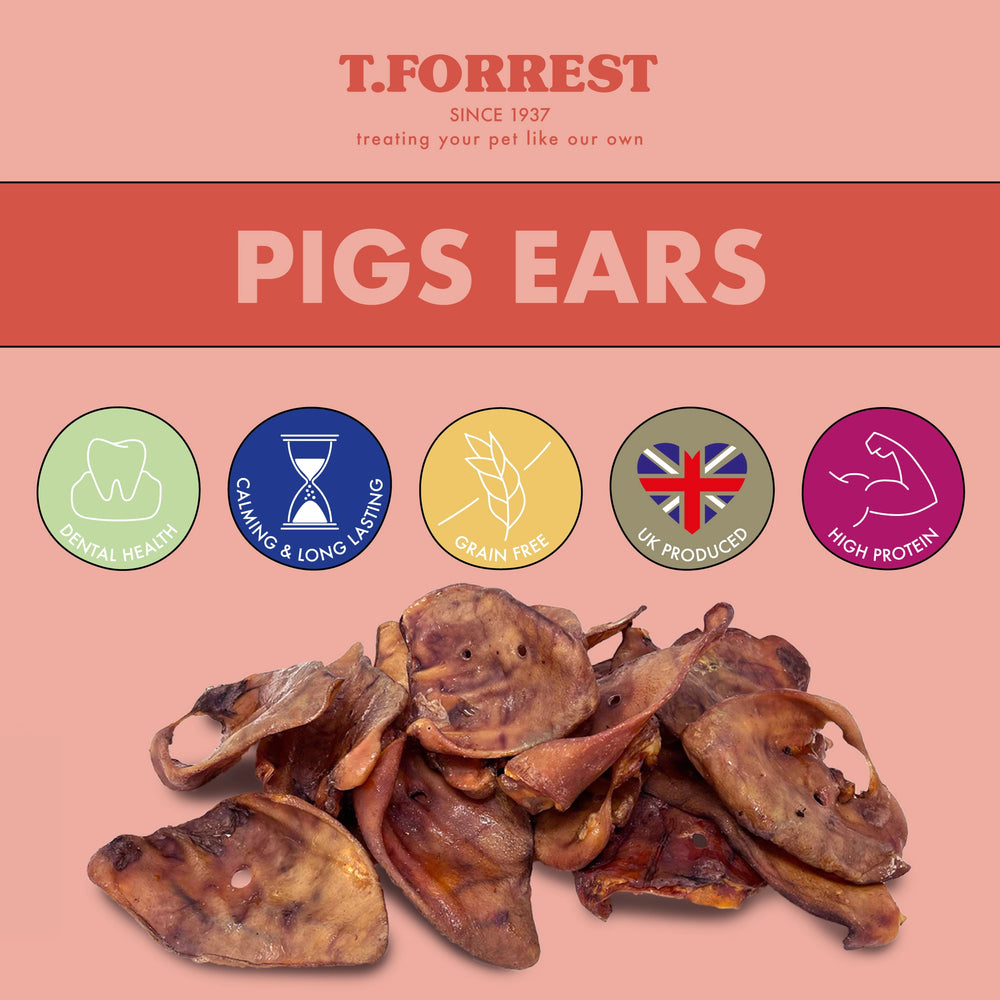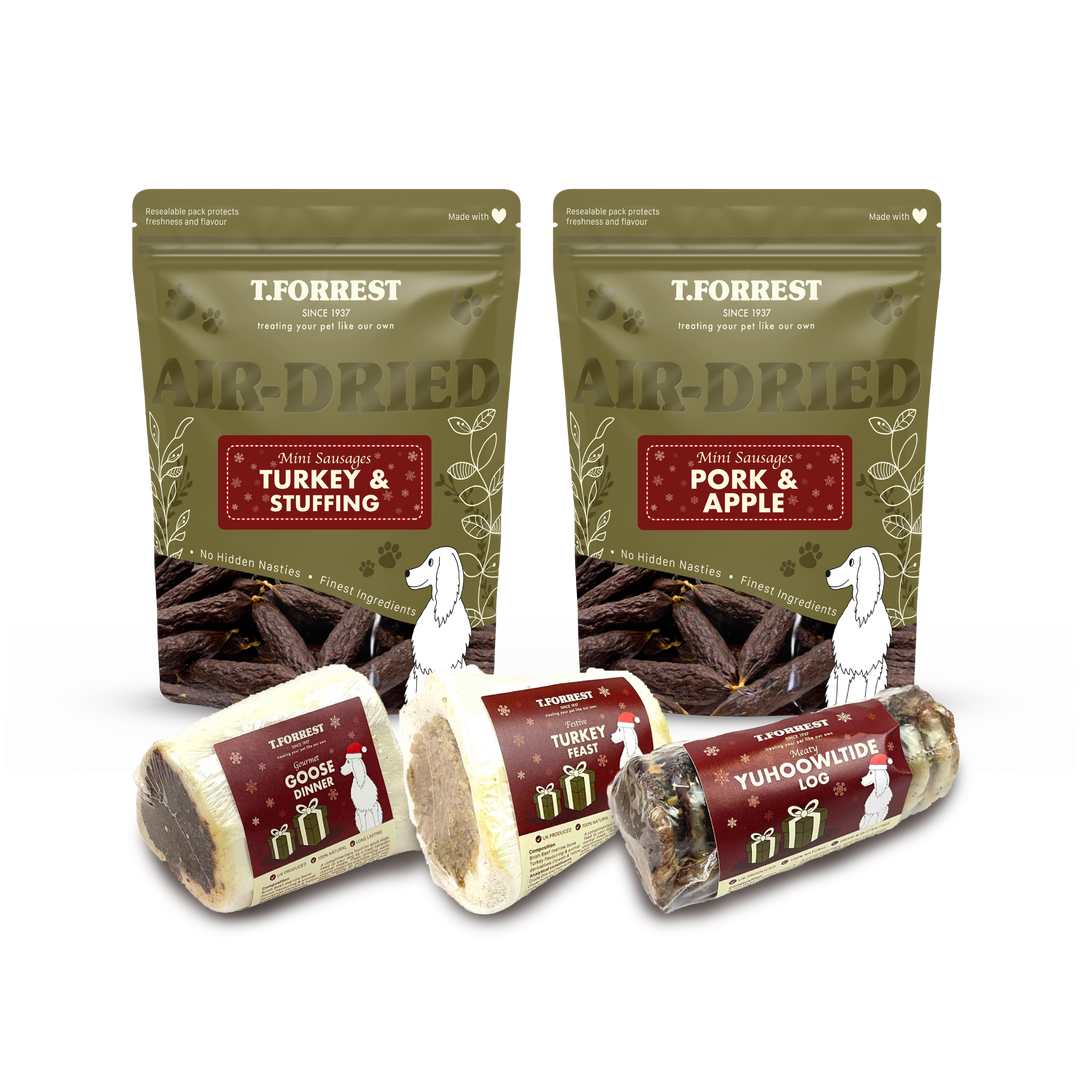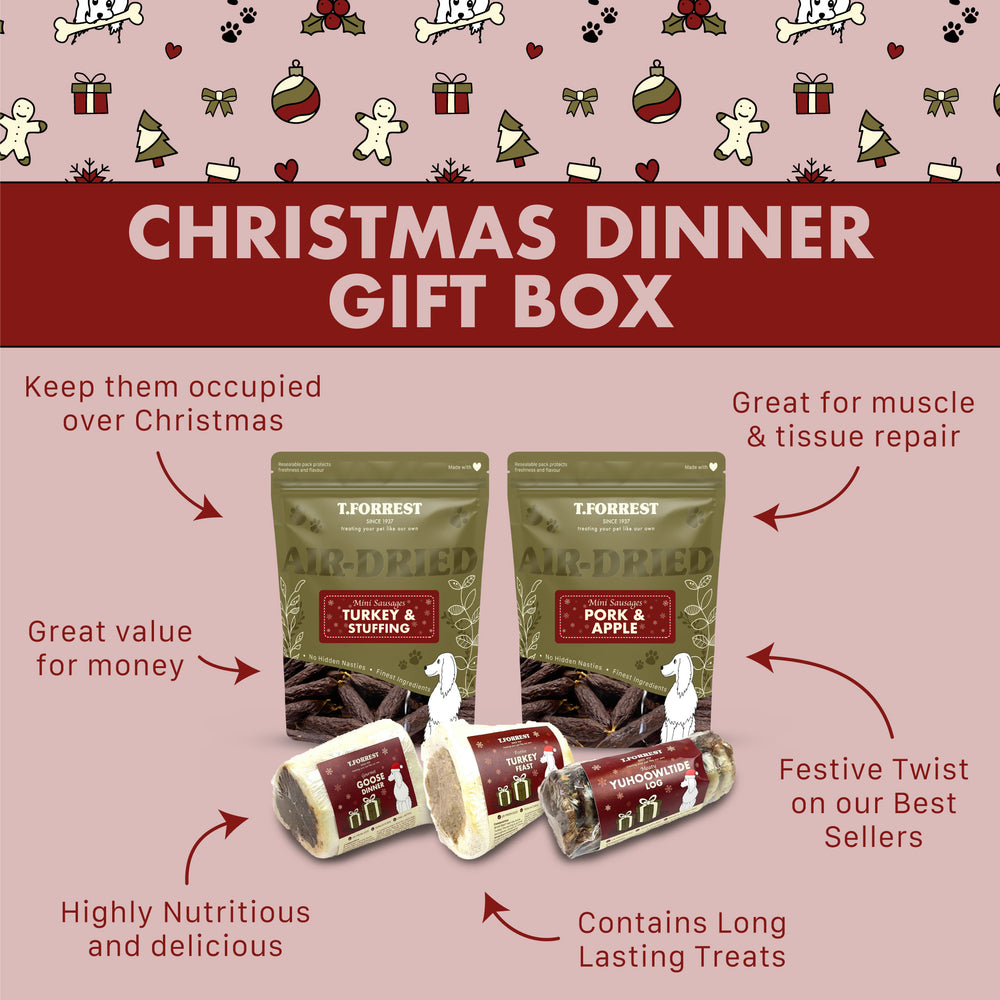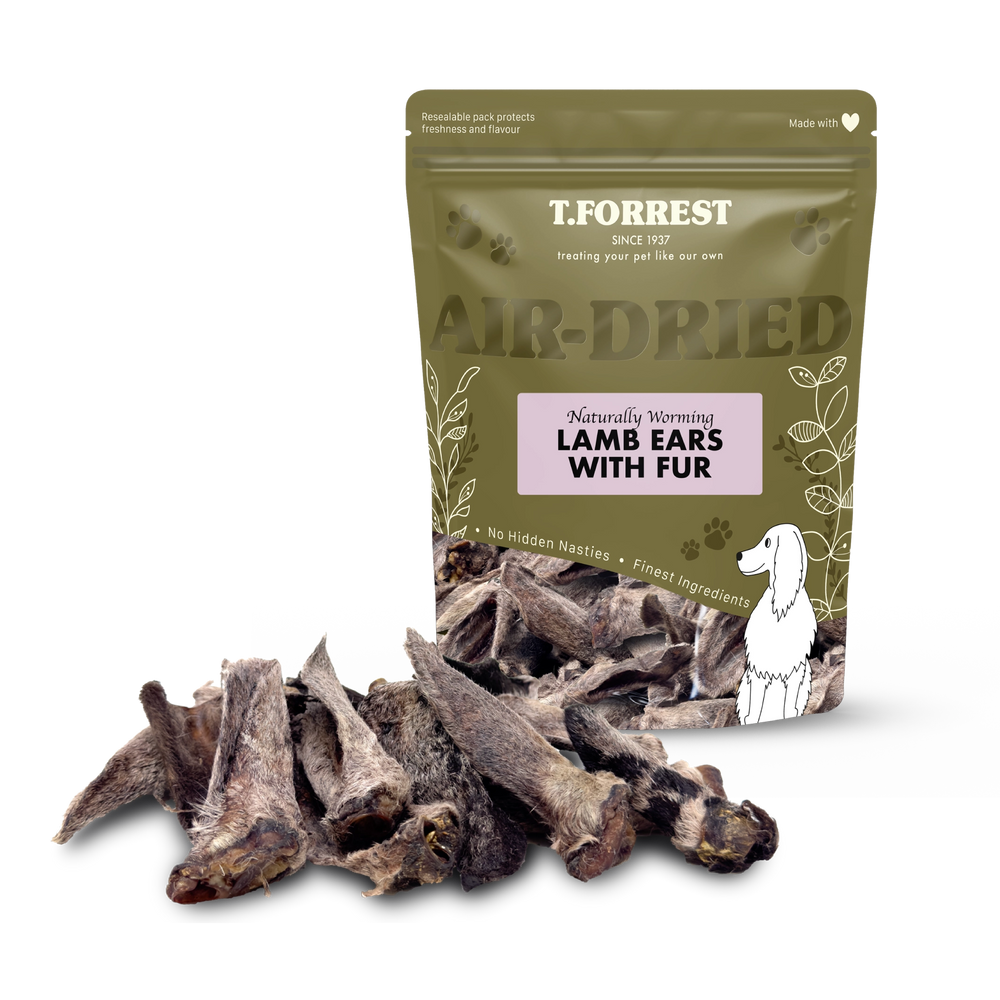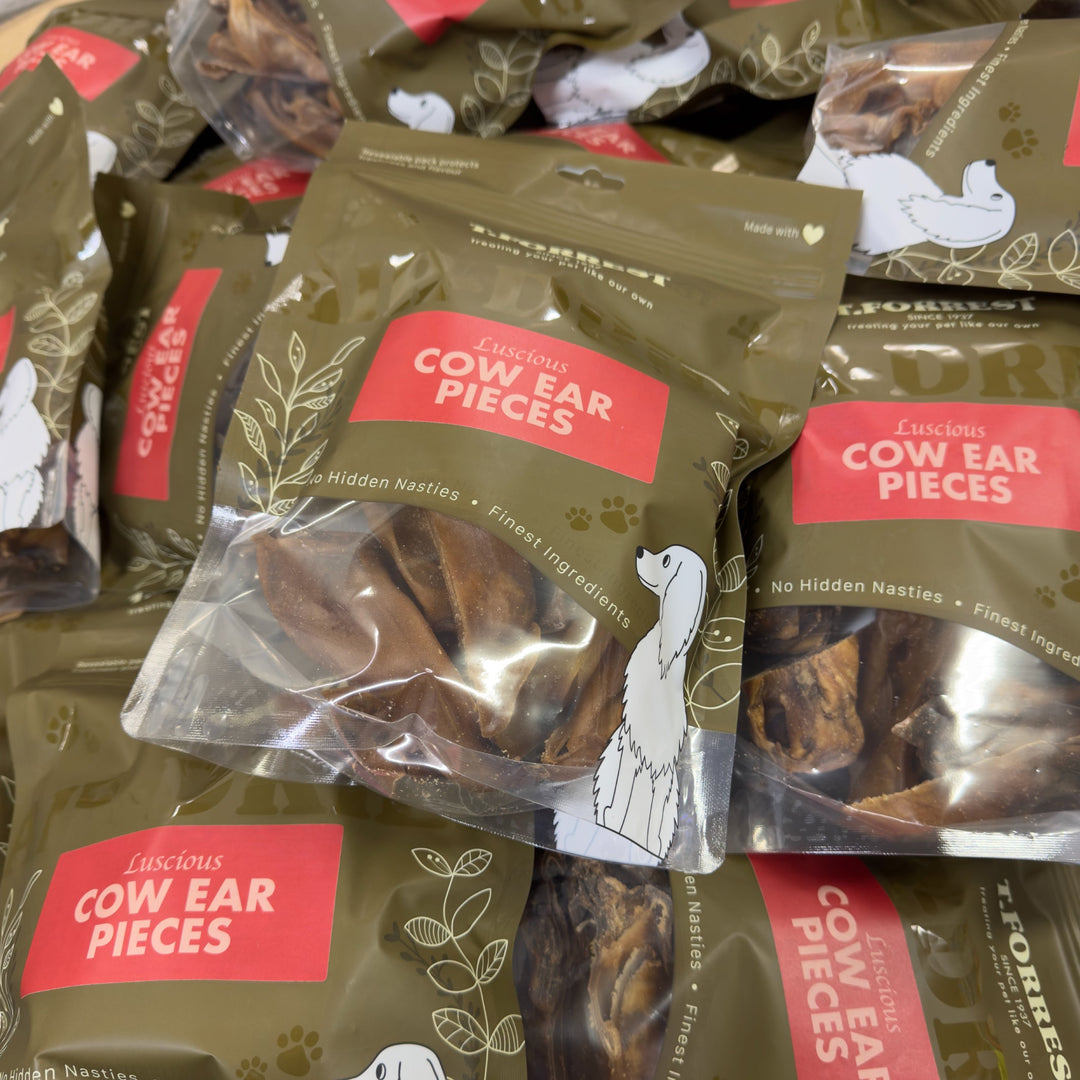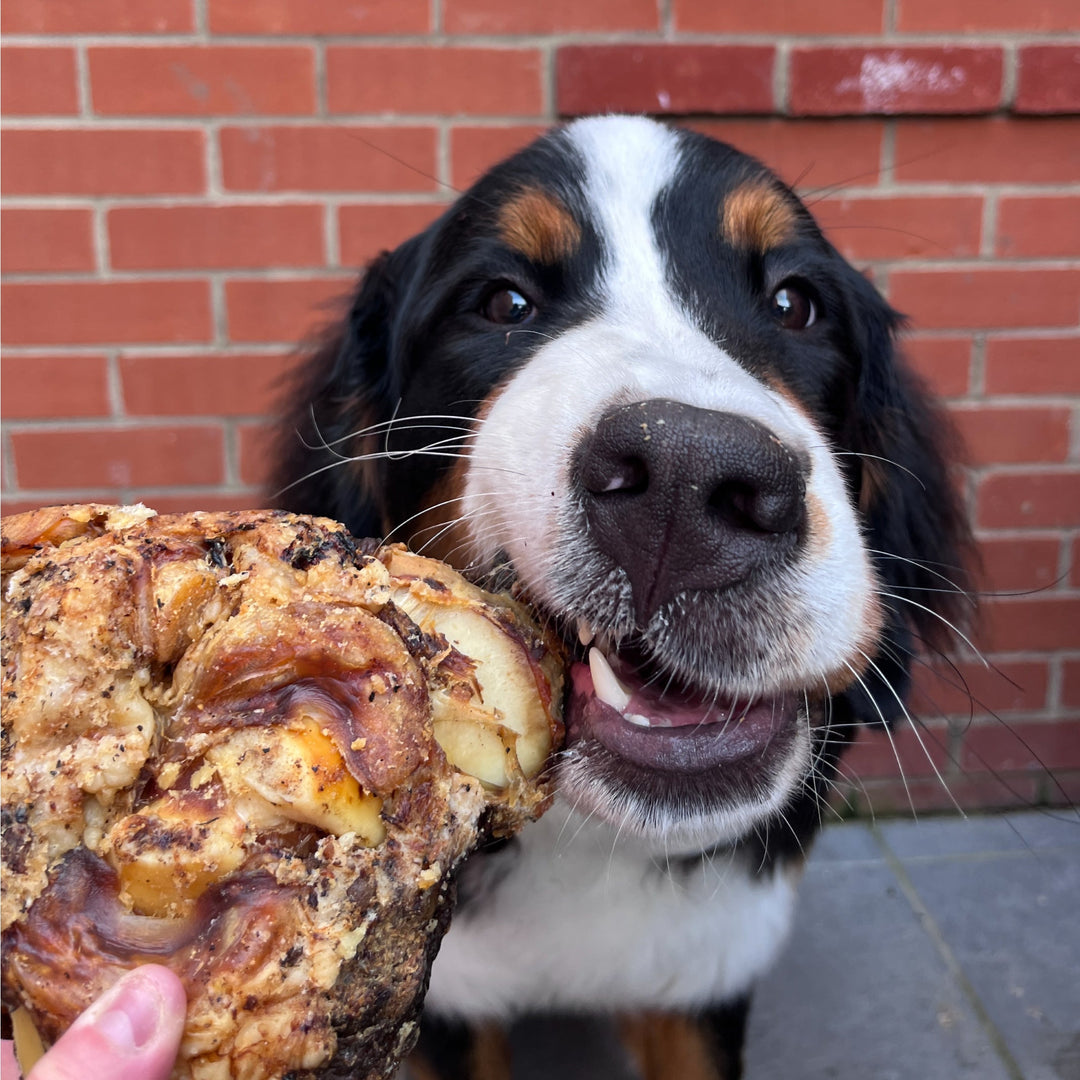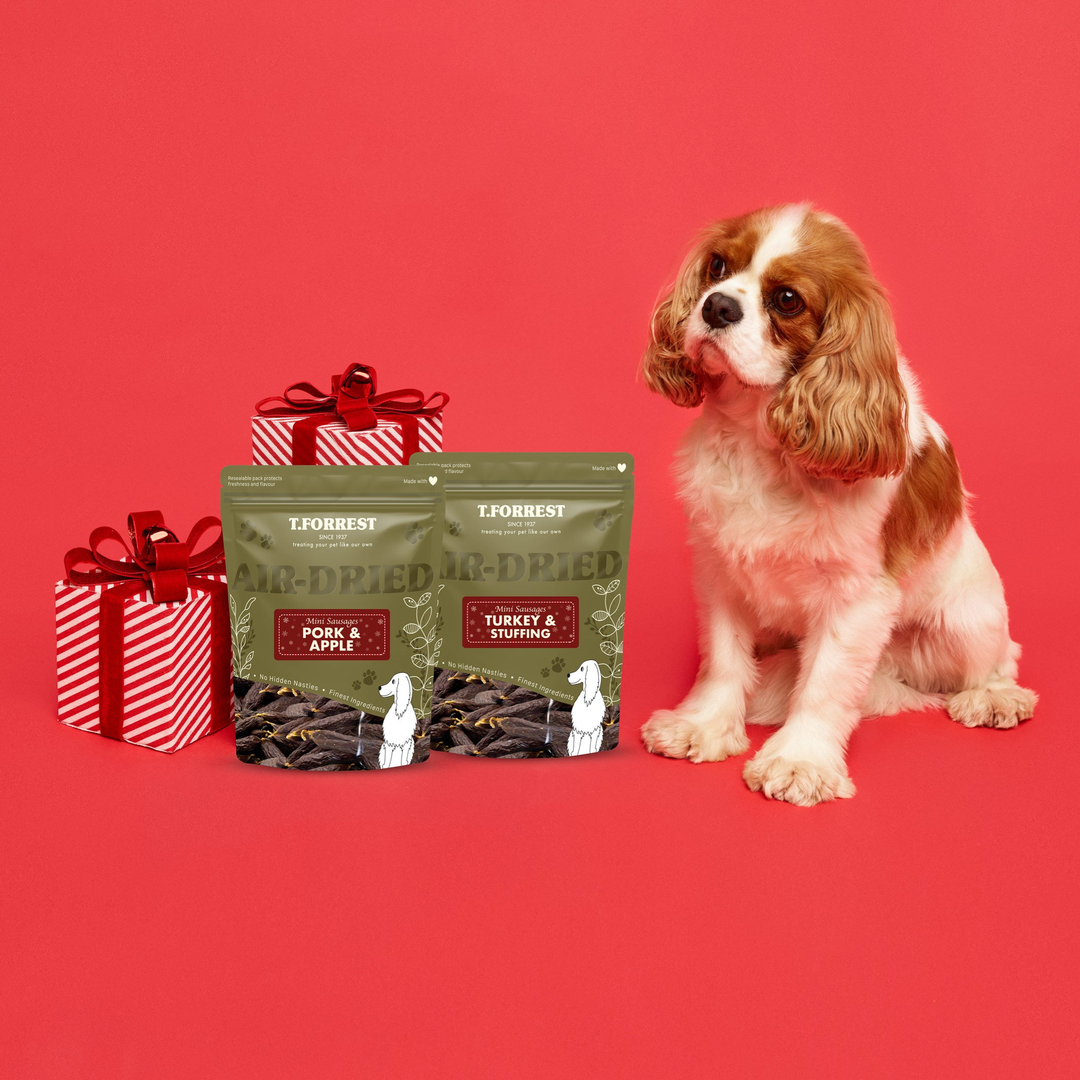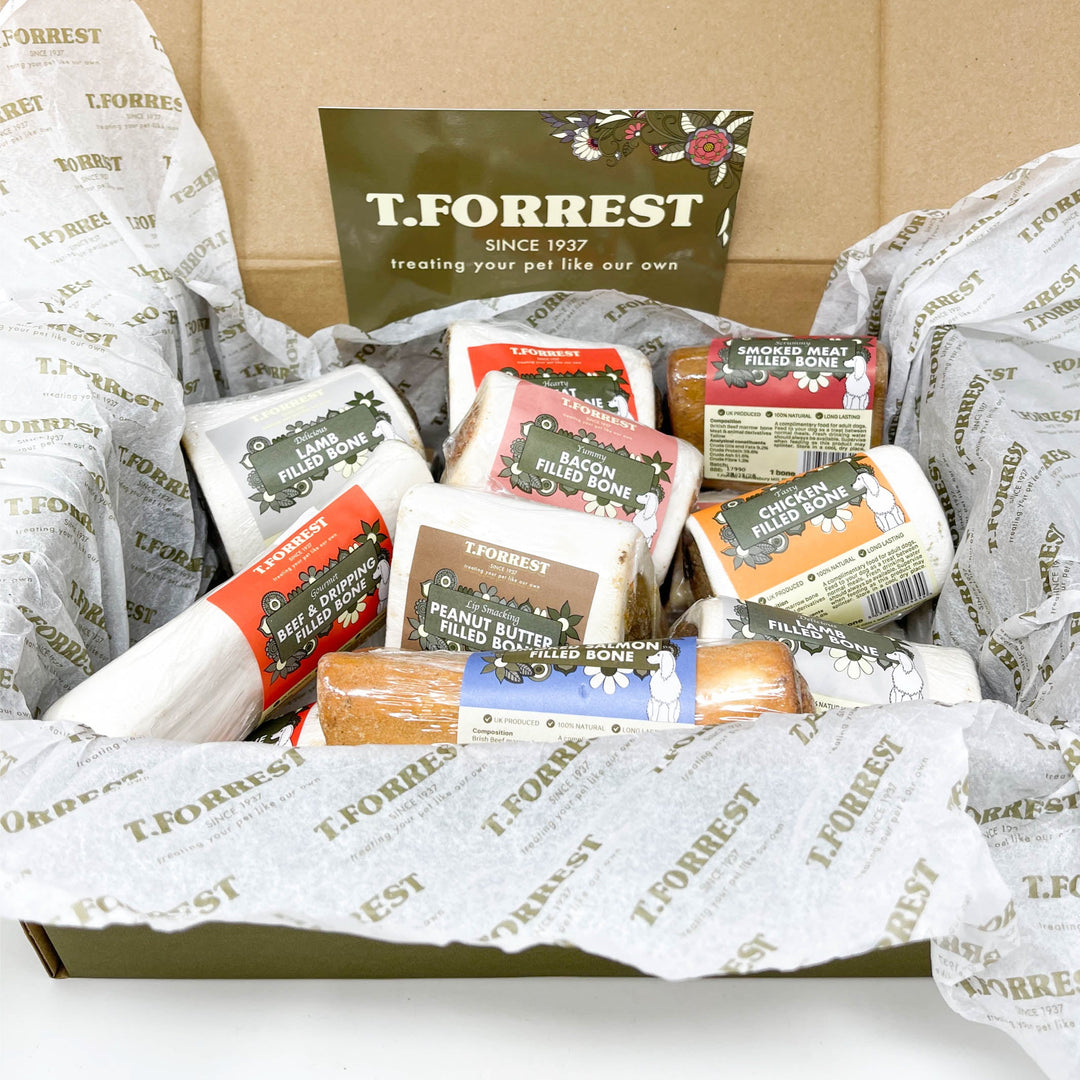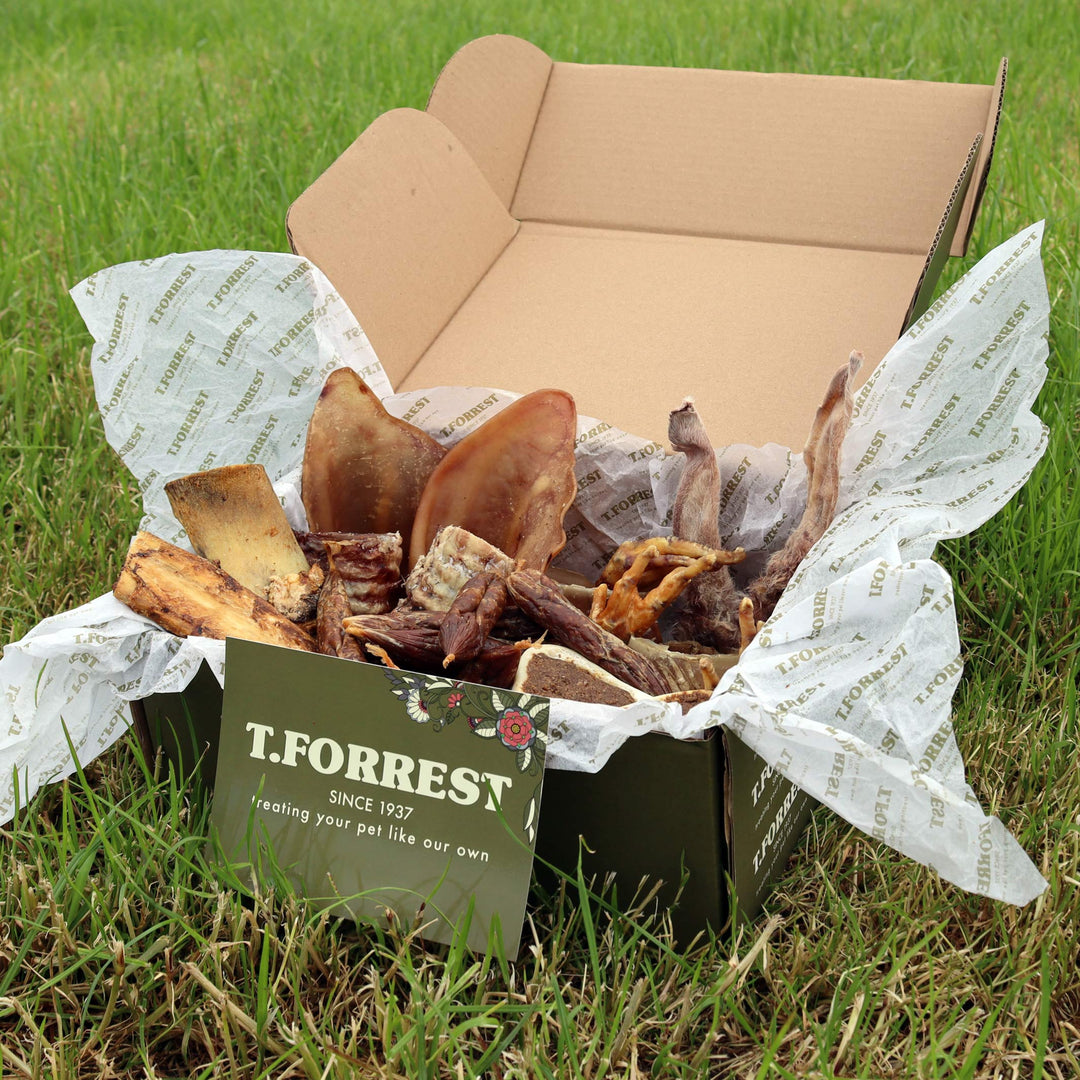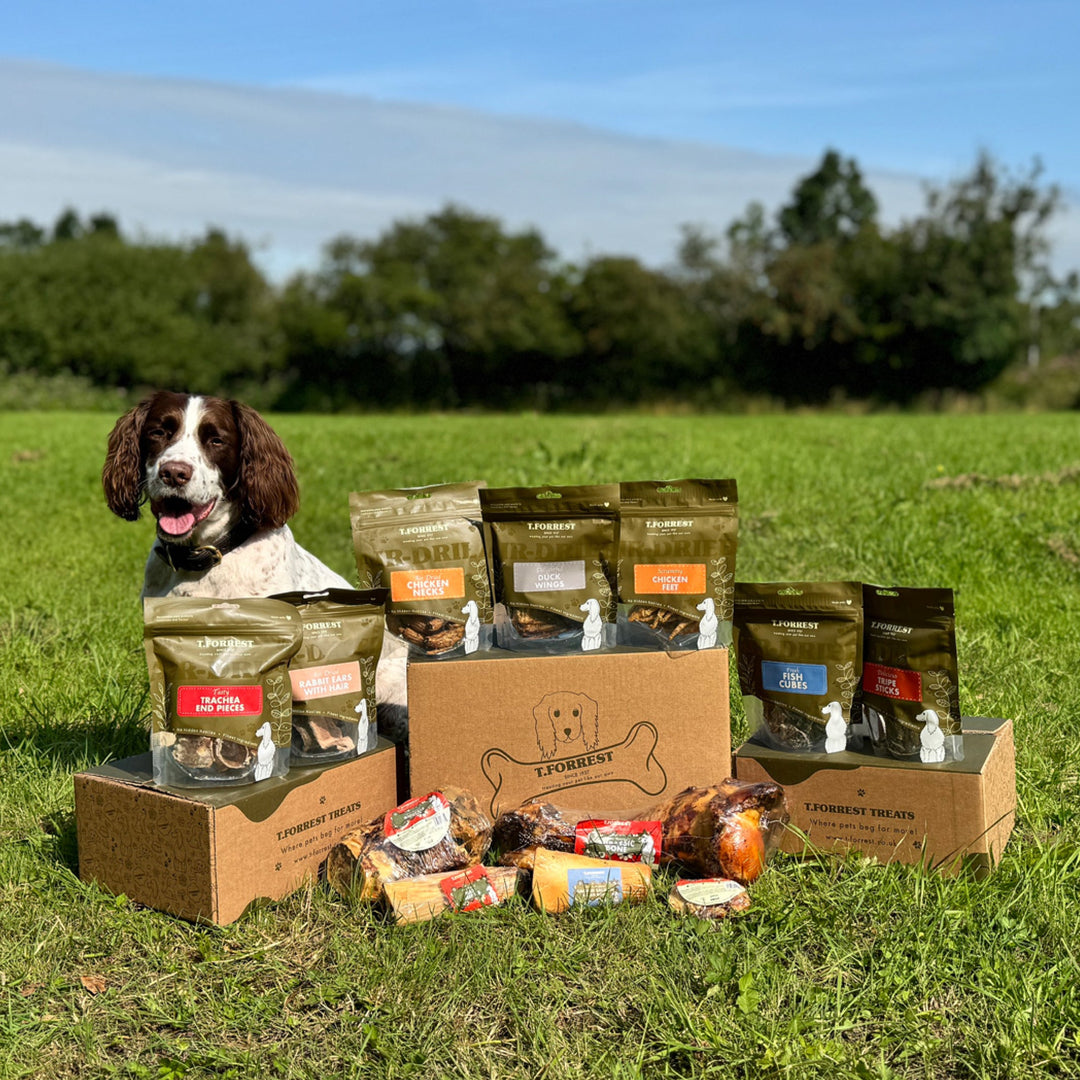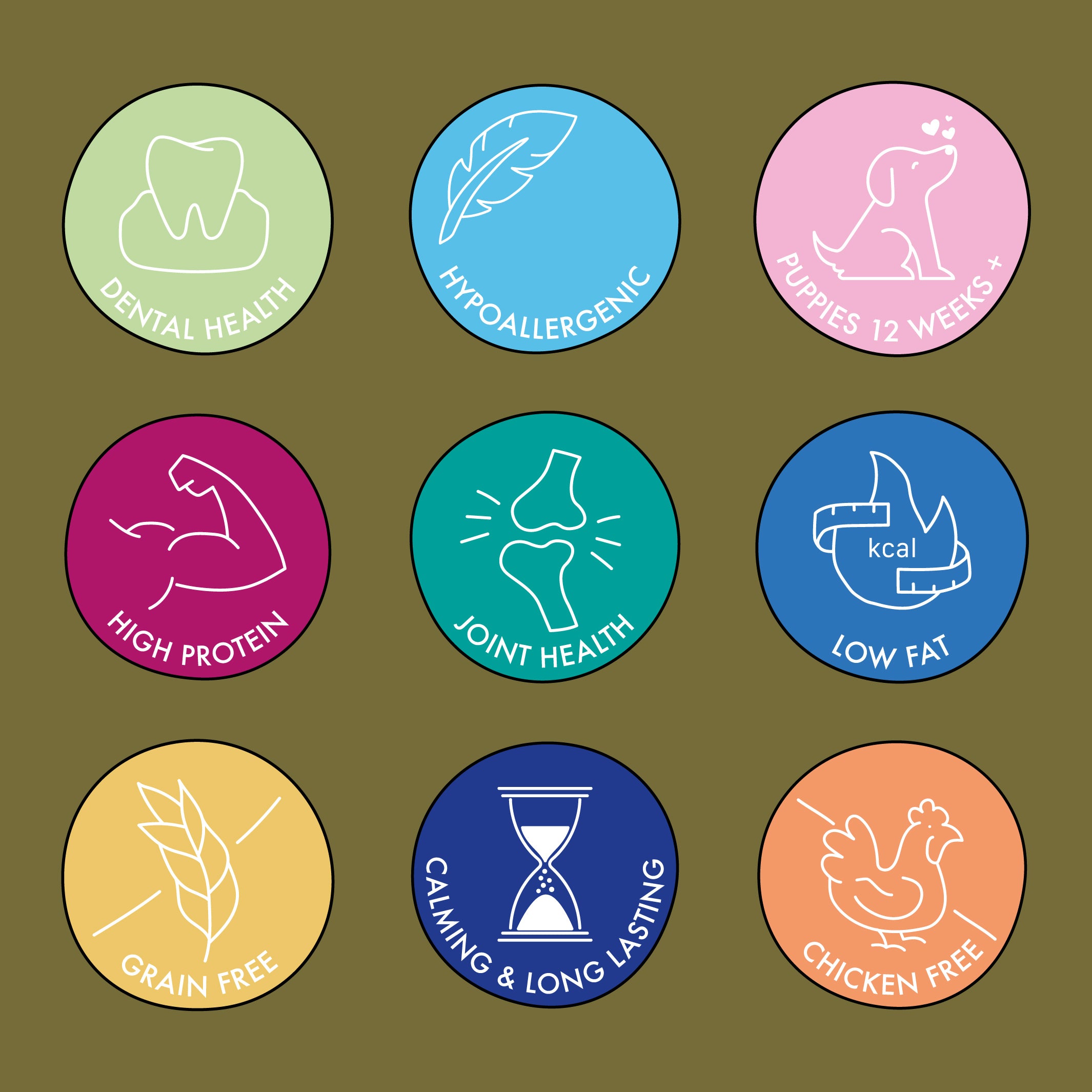How to get a dog to lose weight
Managing your dog’s weight is really important for a happy, healthy and mobile dog. Thankfully, most dogs can achieve a healthy weight without needing to follow a strict diet or rigid routines. A healthy balance of raw food and treats, along with plenty of exercise, is often enough. Our guide explores whether your dog actually is overweight, and how to manage their weight and keep them happy!
In this article:
- Is your dog actually overweight?
- How to tell if your dog is overweight
- How to help your dog lose weight
- Best dog food to lose weight
- Best dog treats to manage weight
- Do overweight dogs have more health problems?
Is your dog actually overweight?
First thing to do – check whether your dog is actually overweight. Just because your pup seems to have a bit of a belly, doesn’t necessarily mean they are overweight or unhealthy. Whether your dog is overweight also depends on the breed and size of your dog.
| Weight | Symptoms |
| Severely underweight | Bones are easily visible and easy to feel under the skin. There is usually an obvious loss of muscle mass. |
| Underweight | Whilst bones are less visible, ribs are still easily seen and felt under the skin. There is a lack of fat on the body with some muscle loss. Waist and abdomen tuck is still very visible. |
| Healthy weight | You should still be able to feel your dog's ribs, but they are not as visible, with no excess fat covering them. Fat can also be felt around the spine and hip bones. Your dog’s waist and abdomen should also be tucked when viewed from the above and side. |
| Overweight | It is difficult to feel your dog’s ribs, due to excess fat. The waist will not be tucked, and barely visible from the top and side. Hip and spine bones are also difficult to feel due to fat. |
| Severely overweight | Severely overweight dogs will have a thick layer of fat, making it difficult to feel or see rib, spine and hip bones. Neck and chest also become much more prominent due to fat deposits, whilst waist and abdomen are expanded when viewed from above and the side. |
Tips to tell if your dog is overweight
The symptoms above are important to check regularly and keep an eye on, but if you’re unsure, there are other ways you can check your dog is overweight. Signs to look out for to tell your dog is overweight:
- Regularly feel your dog's ribs to make sure they are not covered by a layer of fat.
- Your dog's waistline cannot be seen from above anymore.
- Your dog is less active, has difficulty moving (with jumping or getting up) and is reluctant to run, walk or play.
- Clearly panting more, especially with minimal exertion.
How to help your dog lose weight
So now you know whether your dog is a healthy weight, how can you help your dog lose weight? With many dogs, the most important factors often come down to:
- Regular exercise
- Dietary changes
Some dogs, of course, can have other health issues which could be leading to problems with weight. If this is the case, make sure to consult your vet and discuss the best course of action to keep your dog happy and healthy.
Exercise should be tailored to your dog and breed. Some smaller dogs will not need as much exercise as a larger dog that also eats more. If you think your dog is overweight, work on gradually increasing exercise over a few weeks, with regular walks and playtime. Try to add variation to your activities to keep your dog stimulated and make sure to adjust based on your dog’s energy levels and age.
When making changes to your dog's diet, it’s important to find food that is low fat, high in protein and full of nutrients to support your dog’s other health need such as a healthy coat and joint care. This makes natural dog treats a great choice, as they are single ingredient. Raw dog food is also a great choice, offering a high protein, low carb diet!
When creating a diet plan for your dog, remember that dog treats should only make up 10% of your dog’s daily calorie intake. Simply keeping a balanced diet between dog food and treats can make a big difference!
Best dog food to lose weight
There is no correct dog food, and it really does depend on your dog’s eating habits. This includes what dog food they like, but also whether your dog has any allergies that could cause digestive issues.
There are some dog foods specifically designed for weight loss, with a mix of both raw, wet food, as well as dry foods. To find dog food that is suitable, look for:
- Low fat to reduce fat storage
- Vet recommended dog food
- High protein for muscle preservation
- High fibre to keep your dog full
- Avoid any ingredients that could trigger allergies or sensitive stomachs
- Avoid any additives or fillers
- Low calorie to reduce overall daily calorie intake
Best dog treats to manage weight
At T.Forrest, all our treats are 100% natural and single ingredient. This means they are free from additives and preservatives, suitable for dogs with sensitive stomachs and allergies to grain and gluten.
We stock a wide range of treats specifically for weight loss and low in fat. This includes:
- Filled bones
- Roasted bones
- Hooves
- Rabbit ears
- Jumbo sausages
- Buffalo lungs
- Beef liver
- Beef Paddywack
- Duck feet
As many of these treats are long-lasting, it makes them an ideal choice for weight management. Whilst they are still rewarded with a treat, they are kept stimulated over weeks and months by gnawing on treats such as roasted bones or hooves. You can then use smaller treats to regularly reward good behaviour, without having to worry about overfeeding your dog with treats.
Browse our full range of low-fat dog treats.
Do overweight dogs have more health problems?
Yes, overweight dogs are much more prone to having a variety of different health problems. Just some of the health problems being overweight could cause include:
- Lifespan: Unfortunately, overweight dogs can often have a shorter lifespan than dogs with a healthier weight.
- Breathing: Overweight dogs could have respiratory problems, which leads to heart strokes. This is particularly a problem with dogs that already have trouble breathing and those with shorter snouts.
- Arthritis: They are more likely to develop arthritis due to strain on joints. Maintaining a healthy weight and eating dog treats that contain glucosamine and chondroitin.
- Heart disease: Overweight dogs are more likely to develop heart disease, whilst even diabetes and some types of cancer are more likely without a healthy weight.
- Mobility: Dogs may struggle with mobility, which can lead to them putting more weight on and prevent them from exercising and playing, both with you and other dogs.
Whilst each of these health issues can be improved with losing weight, it also leads to an overall lower quality of life for your dog! Keeping them fit and mobile means they can enjoy all the things dogs love, like playtime, walks and our delicious dog treats.
Order natural dog treats at T.Forrest
If you want to help your dog lose weight, natural dog treats are a vital part of your dog’s diet. At T.Forrest, all our treats are 100% natural, made from single ingredients and suitable for small, medium and large dog breeds.
Many treats are low in fat, high protein and long lasting. Check out our selection online and order today with free next day delivery on orders over £29.99.
